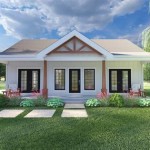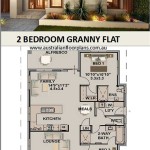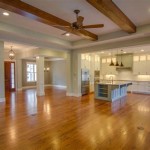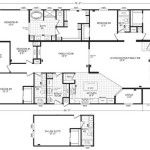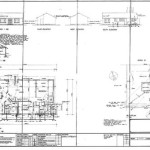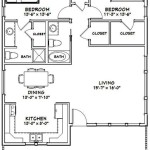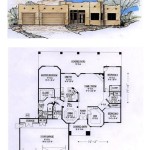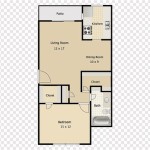Log Cabin Style House Plans: A Comprehensive Guide
Log cabin style house plans evoke a sense of rustic charm, natural beauty, and timeless appeal. These designs offer a connection to nature, providing a comfortable and aesthetically pleasing living space. While the term "log cabin" might conjure images of small, rudimentary structures, modern log cabin house plans encompass a wide variety of sizes, layouts, and architectural styles, catering to diverse needs and preferences. This article explores the key considerations and options available when selecting a log cabin style house plan.
The allure of log cabin homes extends beyond aesthetics. They often offer improved energy efficiency due to the thermal mass of the logs, creating a more stable and comfortable indoor climate. Log construction can also be environmentally friendly, particularly when sourced from sustainably managed forests. Furthermore, the inherent durability and longevity of log homes contribute to their long-term value.
Understanding the Key Elements of Log Cabin Style
Log cabin style is not solely defined by the use of logs as the primary building material. Several architectural elements and design choices contribute to the overall aesthetic. Understanding these elements is crucial when selecting a house plan that aligns with desired style and functionality.
The most fundamental element is, of course, the logs themselves. Different species of wood, such as pine, cedar, and fir, offer varying textures, colors, and resistance to decay. The size and shape of the logs can also greatly impact the look and feel of the cabin. Round logs are a classic choice, while square or rectangular logs create a more contemporary appearance. The method of notching and joining the logs, such as dovetail or saddle notch, affects the structural integrity and the visual character of the walls.
Beyond the logs, other key elements include: exposed beams and rafters, often crafted from natural wood; a large stone or brick fireplace, serving as a focal point and a source of warmth; a wrap-around porch or deck, providing outdoor living space and enhancing the connection with the surrounding environment; and the incorporation of natural materials like stone, wood, and leather in the interior design.
Roofing materials also contribute significantly to the overall style. Options like cedar shakes, metal roofing, or asphalt shingles, chosen in earthy tones, complement the rustic aesthetic. Window choices should also be carefully considered. Multi-paned windows with a wood or wood-look frame are often preferred, offering both energy efficiency and visual appeal.
Interior design plays a vital role in creating the desired ambiance. Open floor plans are common in modern log cabins, promoting a sense of spaciousness and allowing natural light to flow freely. Rustic furniture, exposed wood accents, and warm color palettes contribute to the cozy and inviting atmosphere. The use of natural textiles, such as wool and cotton, further enhances the connection with nature.
Factors to Consider When Choosing a Log Cabin House Plan
Selecting the right log cabin house plan involves careful consideration of various factors, including lifestyle, budget, and site characteristics. Ignoring these elements can result in a home that does not meet the owner's needs or fit harmoniously within its surroundings.
The first step is to define lifestyle requirements. How many bedrooms and bathrooms are needed? Is a large kitchen and dining area essential for entertaining? Do requirements include a home office, a workshop, or a recreational space? Determining these needs will help narrow down the available options and ensure that the chosen plan provides adequate space and functionality. Consider future needs as well, such as accommodating a growing family or aging in place.
Budget constraints are another critical consideration. The cost of building a log cabin can vary significantly depending on the size, complexity, and materials used. Obtaining accurate cost estimates from experienced builders is essential to avoid unexpected expenses and ensure that the project remains within budget. Consider the cost of land, site preparation, materials, labor, and permits when developing a comprehensive budget.
The characteristics of the building site also influence the choice of a house plan. The topography, orientation, and climate of the site all play a role in determining the suitability of a particular design. A sloped lot may require a different foundation than a flat lot. Southern exposure can maximize solar gain and reduce heating costs. In snowy climates, a steep roof pitch is necessary to shed snow effectively. The house plan should be adapted to the specific site conditions to ensure optimal performance and energy efficiency.
Local building codes and regulations must also be taken into account. These codes dictate various aspects of construction, including structural requirements, fire safety standards, and energy efficiency measures. Ensuring that the chosen house plan complies with all applicable regulations is essential to avoid delays and legal issues. Consult with local building officials and experienced contractors to understand the specific requirements in the area.
Furthermore, consider the long-term maintenance requirements of a log cabin. Log homes require regular maintenance to protect them from moisture, insects, and decay. This may involve applying preservatives, caulking gaps, and inspecting the logs for signs of damage. Choosing a house plan with durable materials and a well-designed drainage system can minimize maintenance requirements and extend the lifespan of the home.
Exploring Different Log Cabin House Plan Styles
Log cabin house plans are not limited to a single design aesthetic. A variety of styles exist, each offering a unique blend of rustic charm and modern functionality. Understanding these different styles allows for finding a plan that aligns with personal preferences and architectural sensibilities.
The classic log cabin style is characterized by its simple, rectangular shape, exposed logs, and a large stone fireplace. These cabins often evoke a sense of history and tradition, harking back to the early days of log construction. They are typically smaller in size and feature a cozy, inviting interior. This style is well-suited for those seeking a rustic retreat or a weekend getaway.
Modern log cabin designs incorporate contemporary architectural elements and features. These plans often include large windows, open floor plans, and sleek, minimalist interiors. They may also incorporate non-traditional materials, such as glass, steel, and concrete, to create a unique and visually striking aesthetic. Modern log cabins are typically larger in size and offer more luxurious amenities than classic cabins.
Hybrid log homes combine log construction with other building methods, such as timber framing or conventional stick framing. This approach allows for greater design flexibility and can reduce the cost of construction. Hybrid homes often feature log accents on the exterior, such as log siding or log corners, while the interior may be framed with traditional materials. This style offers a balance between rustic charm and modern convenience.
Scandinavian-inspired log cabins embrace a minimalist aesthetic, emphasizing clean lines, natural light, and functional design. These cabins often feature light-colored wood, simple furniture, and a focus on creating a calm and relaxing atmosphere. They are well-suited for those seeking a modern and understated log home.
Craftsman-style log cabins incorporate elements of the Arts and Crafts movement, such as exposed rafters, wide porches, and handcrafted details. These cabins often feature natural materials, such as wood, stone, and brick, and are designed to blend seamlessly with their surroundings. They are well-suited for those seeking a handcrafted and unique log home.
Ultimately, the choice of a log cabin house plan depends on individual preferences and lifestyle needs. By carefully considering the key elements of log cabin style, the factors that influence the selection process, and the various styles available, individuals can find a plan that captures their vision and creates a comfortable and aesthetically pleasing living space.

10 Bedroom Log Cabin Floor Plans Ideas House Home

Cabin Style House Plan 3 Beds 2 Baths 1659 Sq Ft 47 437 Plans Lake Sims

Aspen Lodge Luxury Craftsman Style House Plan 2439

Standout Log Cabin Plans Escape To An Earlier Gentler Time

Stone Mountain Cabin Plans Tiny House Blog Sims

Cottage Style House Plans Custom English Home Designs

Custom Log Home Floor Plans Katahdin Homes

Log Cabin Home Floor Plans Battle Creek Homes Tn Nc Ky Ga

Dog Trot House Plan Dogtrot Home By Max Fulbright Designs Cottage Plans

Small Cabin House Plans With Loft And Porch For Fall Houseplans Blog Com

